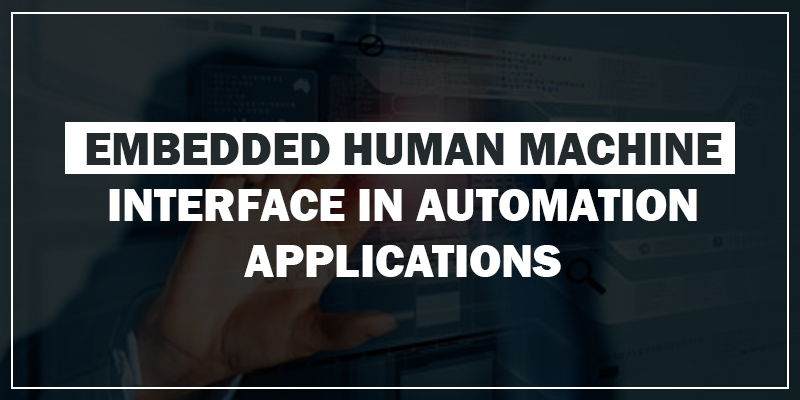
Human Machine Interface (HMI) systems are the way we interact with various digital devices like mobiles, vehicles, and automation systems. In the past few years, the HMI has advanced or progressed from mechanical to electrical. Human Machine Interface has been vital in bringing technology to the next era. Human Machines Interfaces are everywhere, whether driving a car or roasting something in your oven; every activity is automated using Human Machine Interfaces.
However, today’s industrial application system for automation offers two types of HMIs: dedicated HMIs and industrial PCs (IPCs). The dedicated HMIs are nothing but embedded HMI that are developed for specific purposes whereas industrial PCs (IPCs) are utilized for IPC based and general operating systems.
Evolution Of HMI:
Earlier, HMI’s were the simple automated devices which included the switches, lights, pushbuttons, and similar systems.These devices required only a simple input from the user and an indication on the status output. Many appreciated these simple systems where they could get an immediate response from these panel-mounted devices which were simple applications of HMIs.
However, with the advancements in science and technology these simple HMIs were transformed into digital HMIs which served humankind to a greater extent. The digital HIMs included the greater density of indicators and capacitors which were interfaced or embedded software development for a single display. The next is the configuration of this embedded system which can be updated through various software applications making it easier for the operator to rewrite or rewire the system as per specifications.
If you look into the earlier versions of HMIs they are purpose-specific which are capable of processing the designed operation technology. Hence, they turnout to be more efficient and less weight. But due to the advanced development in technology and device development, the PC, IPCs, and even mobiles were developed on general purpose operating technology. Hence, the suppliers were bound to develop an HMI which could be operated on these generalized devices. Thus, this is when the IPC-based HMIs came into the trend by taking the place of embedded HMIs in every aspect like look, feel, capability, and performance.
Why Should You Have IPC-based HMIs?
The foremost reason why you should use an IPC-based HMIs is because of the generalized system and commercial industries incorporating such systems in their products. Another reason for using IPC-based HMIs is because of its higher functionality and lower cost.
- Processor of high-speed
- Unlimited memory space
- High storage capacity
- Access to wired and wireless options
- Designs that can be rewired as per specifications
- High-performance to accept any input from software like analytics and database
- Allows the operational technology operator to select from various HMI software packages
- Excellent integration with various IT devices.
Who does not love such comprehensive IPC-based HMI for their products? IPC-based HMIs are ideal for larger working environments, especially for industrial purposes. Sustream is the best outsourcer for embedded software development services who can develop devices that are feature-rich and suitable for the industrial purpose.



 +1.585.935.7123
+1.585.935.7123 +91-804-148-6861
+91-804-148-6861